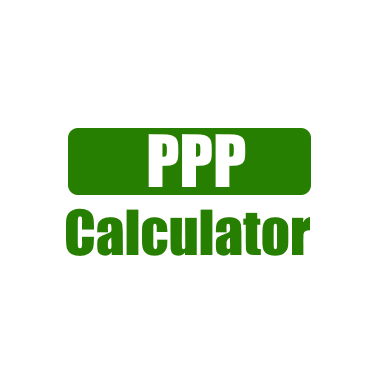
ppp calculator and Economy
ppp calculator and Economy
Economics for ppp calculator and Economy
Buying power equality connects with an assumed harmony between trade rates, in light of cost; without boundaries to exchange, the supposition that will be that indistinguishable merchandise will have similar cost in various business sectors. For a given thing, on the off chance that the cost in one nation expands, the interest for the cash of that nation will diminish in the other nation, and subsequently, the swapping scale will change until the general cost is the equivalent by and by for the two nations for the positive qualities being referred to.Practically speaking, buying power equality is evaluated for a “container of products” (in spite of the fact that there are comparative correlations with single things, for example, the “Large Macintosh Record,” or the “Starbucks Tall Latte File”).ppp calculator and Economy
One more key part of buying power equality includes the comprehension that the ostensible conversion standard and the buying power equality rate best address specific kinds of labor and products. Tradable, durable products will quite often exchange closer to the ostensible swapping scale, while nearby nontradable labor and products fall nearer to the buying power equality rates. Consequently, the ramifications is that there exists a reasonable expense benefit to create tradable things in low pay nations, on the grounds that the laborer cost is lower, yet in addition in light of the fact that their compensation goes farther than in higher pay nations.

Key points:
-
Buy power equality is an idea where the cost of an item or administration is something similar (expecting no exchange boundaries) in various business sectors, and the conversion scale changes with guarantee comparability.
-
The ostensible conversion standard and the buy power equality rate are not something very similar.
-
Tradable merchandise are all the more firmly lined up with ostensible trade rates, while nontradable labor and products all the more intently line up with buying power equality rates.
Purchasing Power Parity and International Comparisons
Buying power equality (PPP) is a type of conversion standard that considers the expense of a typical container of labor and products in the two nations looked at. PPPs are frequently communicated in U.S. dollars. Accordingly, the PPP between the U.S. dollar and another money is the conversion scale that would be expected to buy similar amount of labor and products locally that cost $1 in the US. In this manner, the PPP between any two monetary standards is the proportion of the real buying force of those monetary standards at a given moment for purchasing a given bin of labor and products. As the World Bank made sense of in its 2002 report.
Major Users of PPPs ppp calculator and Economy
The Association of Financial Participation and Improvement (OECD)- Eurostat PPP program first settled at the OECD in 1980 determined to give factual measures to empowering cost and volume examinations of GDP (Gross domestic product) and its parts for the OECD part nations. Progressive rounds in 1985, 1990, 1993, 1996, and 1999 have brought about stretched out inclusion from 18 to 43 nations. Methodology for assortment of information have likewise refined simultaneously.
The OECD multilateral benchmark concentrates on consolidate cost and use information from every one of the nations remembered for the correlations. Notwithstanding the labor and products on the business sectors analyzed, PPPs consider the monetary construction and the market creation in every country. Intricacies emerge from the various business sectors for buyers and speculations and from the range of labor and products consumed in various nations. Equal work is likewise continuing through the World Bank and the Factual Commission of the Assembled Countries, under the protection of the Global Examination Program (ICP), to expand the inclusion of PPP nations not at present covered by the OECD-Eurostat PPP program. Initially sent off in 1968 to cover just a little gathering of nations, the ICP currently covers 160 nations in all districts of the world.
Throughout the course of recent years, the utilization of PPP-based transformations has developed quickly, and numerous clients, for example, colleges, research establishments, global banks, worldwide organizations and global associations, have begun to involve PPPs in making global examinations.
Significance of PPPs in International Economics
Global examinations of monetary execution, way of life, and efficiency of workforce made consistently, for various reasons, by global associations (like the Unified Countries, the World Bank, or the OECD), global banks, worldwide organizations, vacationers and voyagers, and specialists. The World Bank likewise distributes correlations of public result, for individual nations as well as for “low-pay” or “major league salary” groupings of nations. Aggregations and comparisons of this nature require that output converted into a common currency, i.e., a common unit of value. Often, the U.S. dollar or the Euro used as the common currency for this purpose. Conversion of national outputs of individual countries to the U.S. dollar basis, for example, conventionally done by using market exchange rates, which the rates at which national currencies officially converted to the U.S. dollar at the relevant time.
Global associations
As of late, global associations have additionally begun to work out and utilize buying power equalities for changing over factors like public result or utilization to U.S. dollars. In this way, the World Bank currently distributes figures for all nations in view of both the swapping scale change and the PPPs in its yearly World Improvement Report. For most nations, yet especially for the low-pay nations, the sums yielded by the two methodologies are totally different. Figures for a chose gathering of nations distributed On the planet Improvement Report 2003 introduced in Table I for delineation. It ought to noted from Table I that, when changed over into PPP gross public pay, figures for all nations with the exception of Japan, Singapore, and the US expansion in contrast with the swapping scale based figures.
Considering the lacks of global examinations in view of trade rates, PPP progressively perceived as a more solid measure for worldwide correlations of result, way of life, and personal satisfaction. Estimations of result in light of trade rates currently progressively viewed as improper and possibly deceptive for making worldwide examinations. This is on the grounds that trade not entirely settled by a huge number of variables and by and large are not solid proportions of result. At some random time, numerous nations known to have trade rates that either underestimated or exaggerated, yet kept up with by their legislatures for different contemplations, like product advancement or import replacement.The utilization of such trade rates for global examinations is probably going to present bends. As the World Bank recognizes On the planet Bank Improvement Report 2003, ostensible trade rates don’t necessarily reflect global contrasts in relative costs.

PPPs and Climate Change
The legitimate estimation of public result isn’t an end in itself. As the accompanying model shows, legitimate estimation of result helps the clients in making more significant decisions about many financial and social peculiarities in which the degree of public result is straightforwardly or by implication significant — for instance, environmental shift during the direction of the 21st hundred years. In 2001, the Worldwide Board on Environmental Change (IPCC) delivered its Extraordinary Report on Emanation Situations (SRES).The reason for this report was to evaluate the degree to which discharges of ozone depleting substances might prompt a climb in worldwide temperatures on The planet.
The IPCC made separate projections
Since outflows of ozone harming substances in a nation a component of its monetary development, the IPCC made separate projections of financial development in creating and created nations over the period 1990-2100, and revealed that, in light of these projections of development in public result, worldwide temperatures projected to increment somewhere in the range of 1.4° and 5.8°C over the period 1990-2100.These projections in this manner became what The Market analyst (February 15, 2003) portrayed as the most often refered to numbers in the field of ecological strategy, and perhaps the most broadly refered to numbers in any field of public arrangement. Fundamentally, the primary justification for the debate that encompassed these numbers connected with the utilization (or the shortfall of the utilization, for this situation) of PPPs in assessing public result.
Pundits of the IPCC projections contended that the SRES had determined the paces of development on the planet Gross domestic product utilizing market trade rates. They further contended that, like the impact noted in Table I, the utilization of market trade rates downplayed the portion of the economies of the emerging nations on the planet economy in 1990, and correspondingly misjudging the paces of Gross domestic product development that the agricultural nations would accomplish in finding the created nations during the 21st 100 years.Since higher paces of development are related with more elevated levels of emanations of ozone depleting substances, misjudgment of paces of development by IPCC brought about a comparing misjudgment of levels of outflows and mean temperatures.
Calculation of PPPs ppp calculator and Economy
Estimation of PPPs includes complex and thorough techniques for choosing the items to looked at, gathering costs of these items, inferring normal costs for the entire of a nation and a specific year, and deciding loads in aggregating cost records for gatherings of items that comprise suitable headings (like gross confidential utilization, gross farming or modern result, etc). The World Bank and the OECD presently coordinate the assemblage of PPPs under the Global Examination Program (ICP). The ICP Handbook 2004, distributed by the World Bank in 2003, gives more detail on the method for computing PPPs.
Limitations of PPPs ppp calculator and Economy
Despite expanding acknowledgment and prevalence, PPPs are not without impediments, and won’t supplant conversion scale based correlations of global information. PPP rates depend on a restricted arrangement of perceptions and not liberated from inspecting mistakes. That’s what the World Bank recognizes in spite of the fact that endeavors made to address for quality contrasts, the ICP deals with the issue of coordinating “like with like,” which, in certain areas, like administrations, might be troublesome.One issue is that at times, cost studies don’t cover the whole nation or the whole year. Subsequently, the costs utilized in PPP estimation may not reflect completely the normal public cost winning in the country scrutinized. For nonbenchmark nations, PPP information are essentially work area gauges in light of relapse conditions. Thusly, more wariness ought to practiced when deciphering PPPs for administrations.



